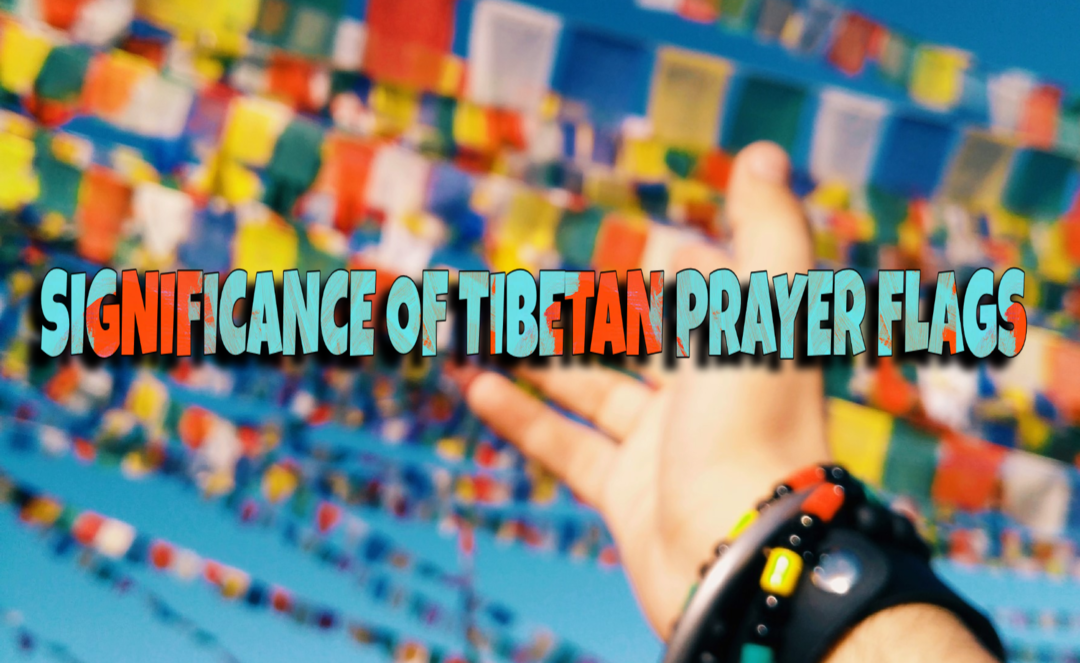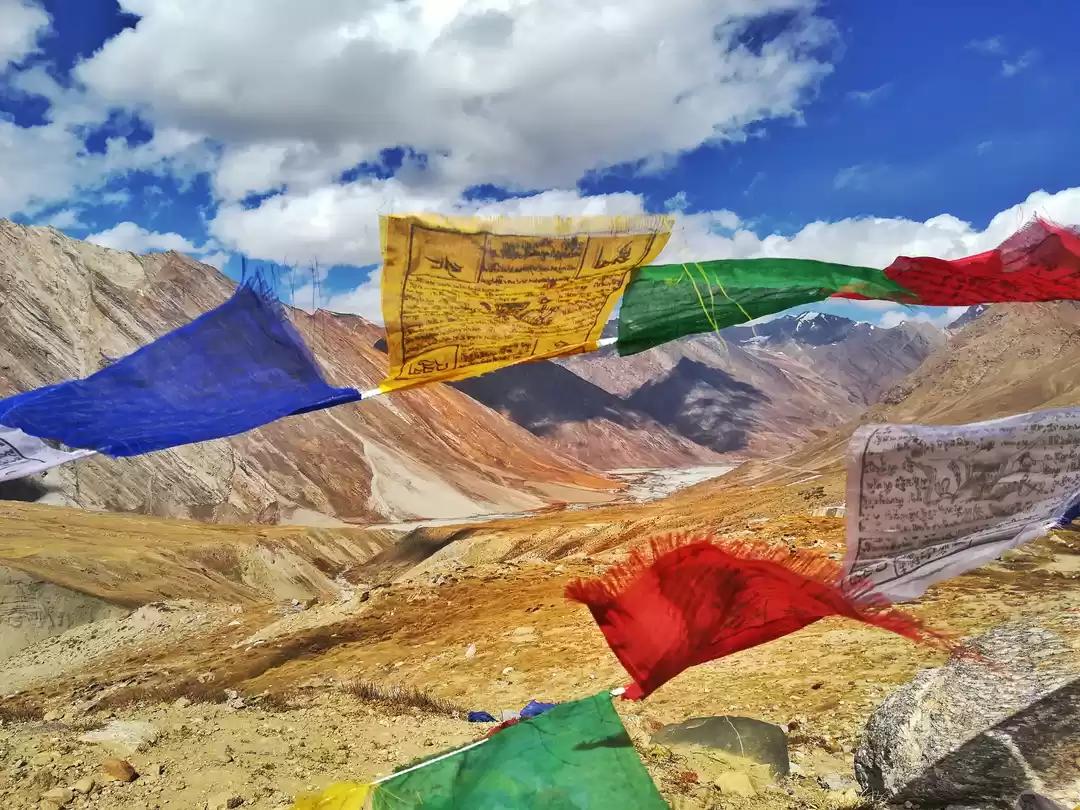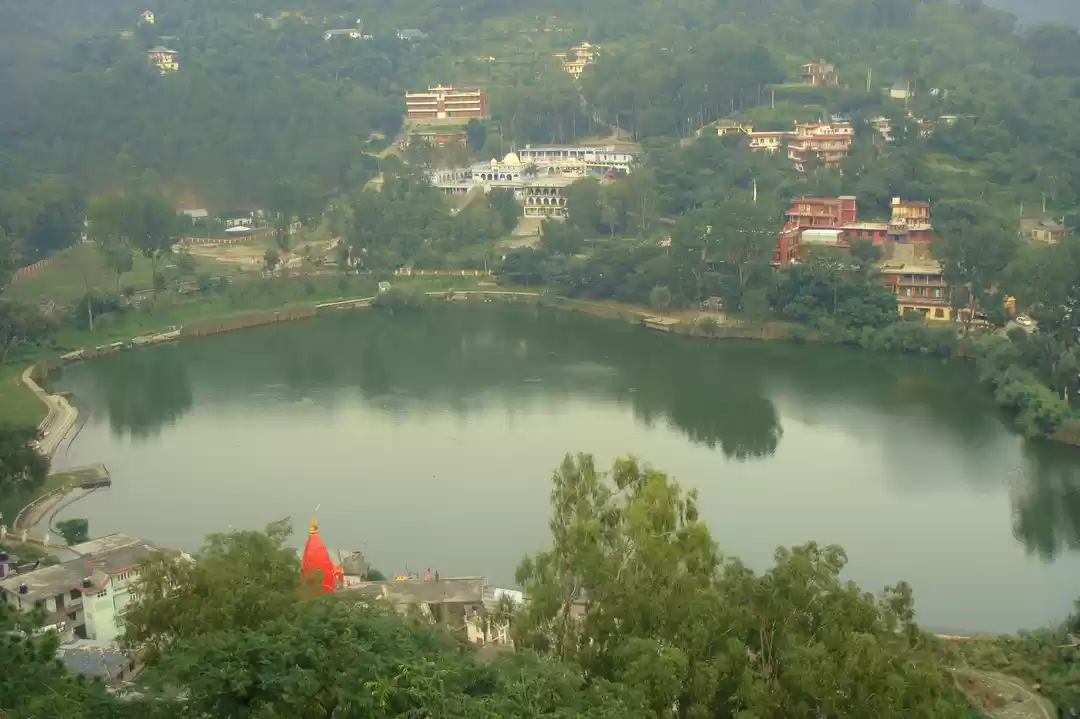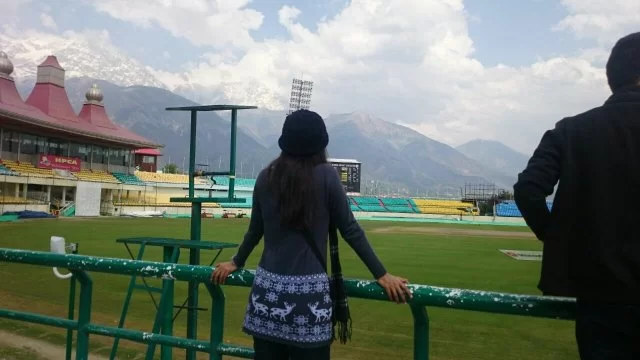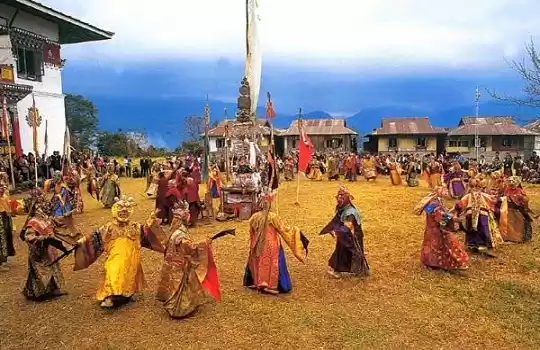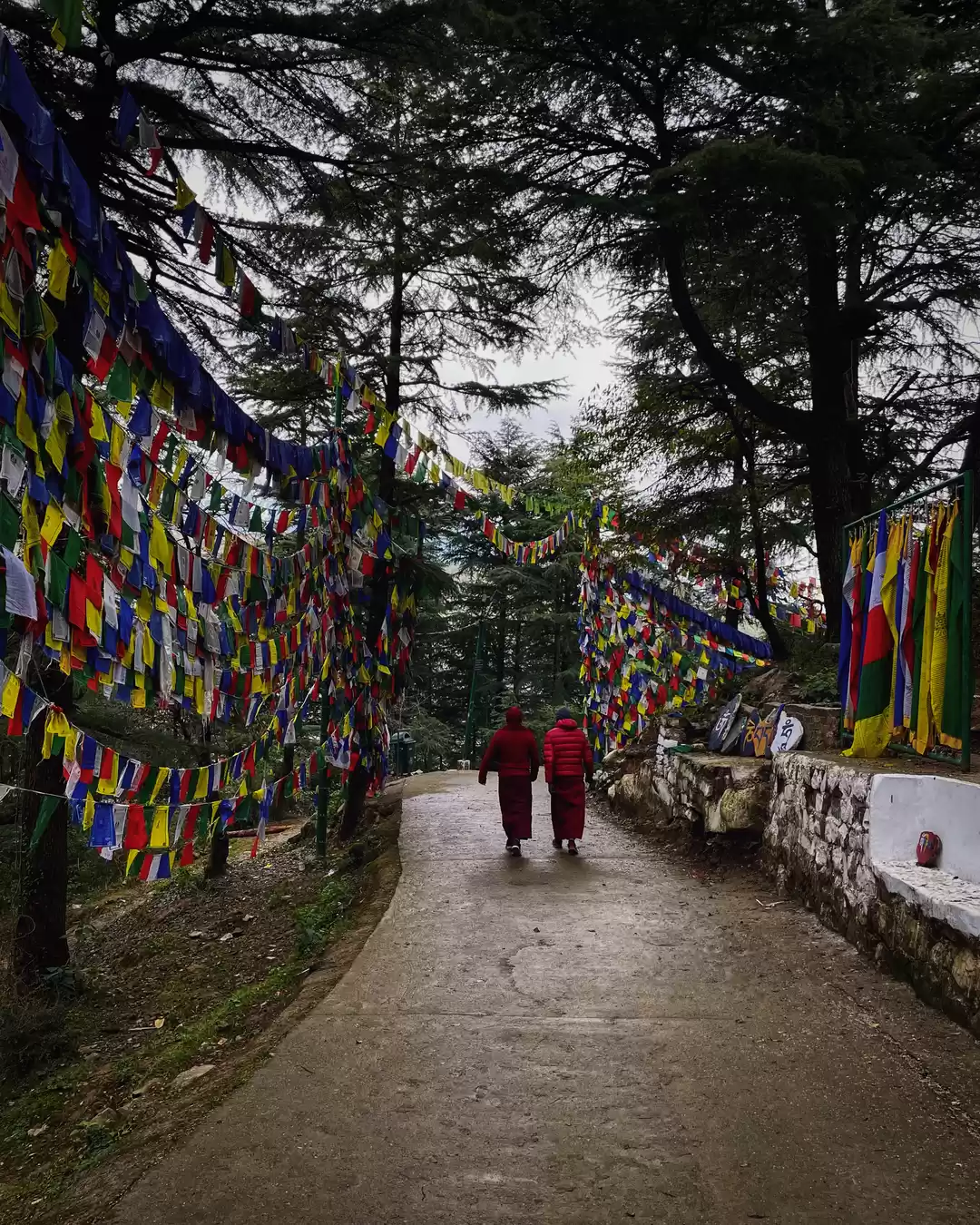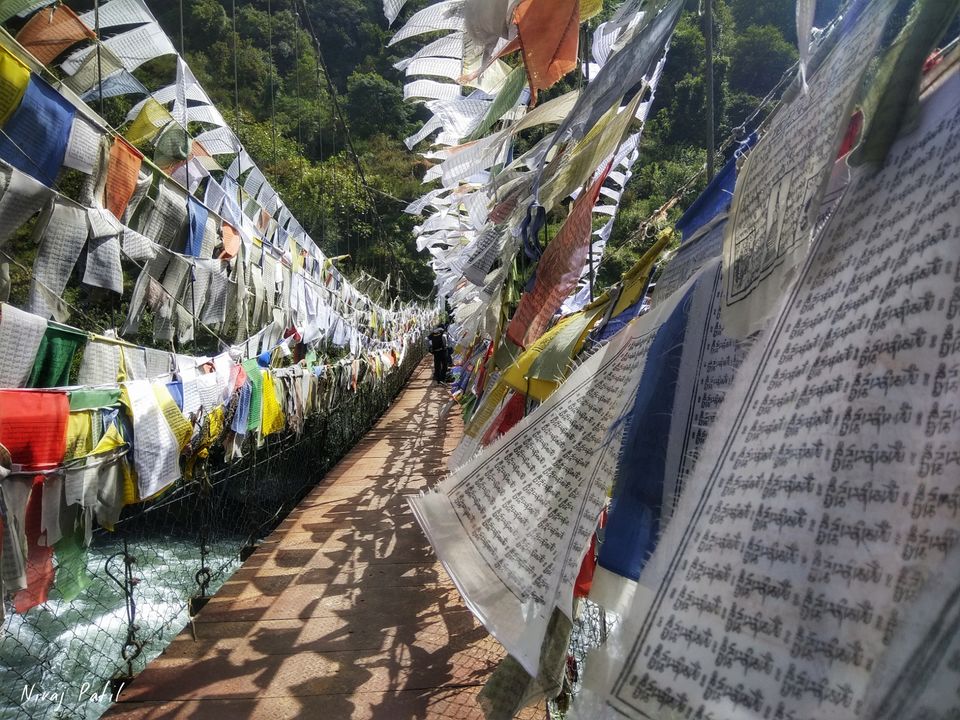
“Om Ma Ni Padme Hum” Many of us might have come across this SACRED SCRIPT a number of times. Many of us would have not known that it is sacred though. Remember where…..
Yes on the Tibetan Prayer Flags that we see on high mountain passes, the bridges, on your office desks as souvenirs, bike handles and windshield of cars. Flapping high in the air and dancing with the wind making us wonder what significance do they hold in Tibetan/Buddhist culture. Even I was wondered and thus went on asking questions to the people that I met along the journey. (P.S. I am writing this blog as per my understanding and as per the stories that I have heard when I had been to the mountains and my intent is to provide the maximum information and not hurt any religious sentiments).
So the questions led me to answers and answers led me to sharing this blog with you guys. As a young travel enthusiast I always saw these prayer flags in pictures, documentaries (I never knew they were called prayer flags) on high mountain passes where my friends had traveled to Ladakh and Spiti Valley and to high mountain regions. They used to bring the same prayer flag as a souvenir but smaller in size and yet were left with questions as to what do they mean. So it was the time that I make a trip to the mountains and find the answers behind those prayer flags. Last year during my Biking expedition to Tawang (https://www.tripoto.com/india/trips/tawang-biking-expedition-5dfe756b24d56) I came across many of such prayer flags hung high on the mountain passes which were swaying graciously and that was the time I decided to decode them and find the answers behind those.

History:
According to some lamas prayer flags date back thousands of years to the Bon tradition of pre Buddhist Tibet. Shamanistic Bonpo priests used primary colored plain cloth flags in healing ceremonies. Each color corresponded to a different primary element - earth, water, fire, air and space – the fundamental building blocks of both our physical bodies and of our environment. According to Eastern medicine health and harmony are produced through the balance of the 5 elements. Properly arranging colored flags around a sick patient harmonized the elements in his body helping to produce a state of physical and mental health.
Meaning:
Prayer flags, also called as Tibetan Prayer Flags are sacred to Buddhist culture and carry a huge significance. They are not just normal prayer flags but carry spiritual meaning within. Each and every color represents a different element of nature. There are 5 colors in Prayer Flags and are hung in specific order from left to right (Blue, White, Red, Green, Yellow). Blue represents Sky, White represents Air, Red represents Fire, Green symbolizes Water and Yellow symbolizes Earth. It is said that these prayer flags emit positive spiritual vibrations and that the prayers are carried by the wind like silent healers.

The Sacred text:
The sacred text “Om Ma Ni Padme Hum” which translates as “Om” – The sacred syllable, “Mani” – Jewel or Bead, “Padme” – Lotus, “Hum” – Spirit of Enlightenment. You can also recite this mantra "Om Ma Ni Padme Hum" which is said to have healing powers and lower your stress and anger. Chanting in general soothes the senses and sends energy to the parts of your body. In English, this rhythmic chant literally translates to “Praise to the Jewel in the Lotus. There are 2 types of prayer flags, horizontal ones called Lung ta (meaning "Wind Horse") in Tibetan, and vertical ones, called Darchog (meaning "flagstaff"). Tibetan prayer flags are used to promote peace, compassion, strength, and wisdom. Tibetans believe the prayers and mantras will be spread by the wind and bring good will and compassion to benefit all beings.

Where to hang them:
Prayer flags should always be hung on high areas and not near ground surfaces where there are chances of them being littered or touching the ground. It is considered disrespectful if the Buddhist prayer flags touch the ground. That’s why we see prayer flags hung high on the mountain passes where the wind flows and they cannot touch the ground. The reason why they are put high above the roof is that they flutter in the wind. It is said that they emit positive spiritual vibrations and the wind like silent carrier that carries the prayers. So, next time if you want to hang them somewhere, make it sure that they’re on a height.

When to hang them:
I am still searching for the right answer for this question yet, some say its auspicious to hang them around Chinese New Year, whereas some say its auspicious to hang them during Tibetan New Year (Losar). Now the difference between the two might be of a day or two or even a month. I say hang them with pure intention and a pure heart that they carry prayers and goodwill to the surroundings. Also it is considered a good omen if you receive them as a gift.

How to dispose them:
Prayer flags fade with time and their color turns white. It is said that when the prayer flags turn white their prayers have been carried. When you decide to remove the prayer flags, don’t just throw them away as it is considered disrespectful in Buddhist Culture. When disposing of old prayer flags one should burn them so that the smoke may carry their blessings to the heavens. Do not let prayer flags touch the ground as they are burned. You may also choose to let your old Tibetan prayer flags fade and disintegrate naturally, hanging new prayer flags up with old ones. The contrast between old and new prayer flags is a reminder of impermanence and the continuing cycle of birth and death.
So that was all about those mystical prayer flags from the mountains and the stories that they held. Do drop down your comments and suggestions and your views on it if you have any other sides that you have heard about the Prayer Flags and let the knowledge spread with the wind just like those prayer flags....
Till then Hasta-La-Vista ;)
















